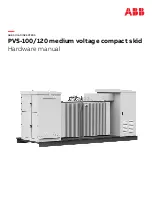
R&S AFQ100A
Status Reporting System
1401.3084.32 5.30
E-3
Parallel Poll
In a parallel poll, the controller uses a single command to request up to eight instruments to transmit
one bit of information each on the data lines, i.e., to set the data line allocated to each instrument to a
logical "0" or "1". In addition to the SRE register, which determines the conditions under which an SRQ
is generated, there is a parallel poll enable register (PPE). This register is ANDed with the STB bit by
bit, considering bit 6 as well. The results are ORed, the result is possibly inverted and then sent as a
response to the parallel poll of the controller. The result can also be queried without parallel poll by
means of the command "
*IST?
".
The instrument first has to be set for the parallel poll using the Visual Basic command "
IBPPC()
". This
command allocates a data line to the instrument and determines whether the response is to be inverted.
The parallel poll itself is executed using "
IBRPP()
".
The parallel poll method is mainly used to find out quickly which one of the instruments connected to
the IEC/IEEE bus has sent a service request. To this effect, SRE and PPE must be set to the same
value.
Query by Means of Commands
Each part of any status register can be read by means of queries. The individual commands are listed
in the description of the STATus Subsystem. The returned value is always a number that represents the
bit pattern of the register queried. This number is evaluated by the controller program.
Queries are usually used after an SRQ in order to obtain more detailed information on the cause of the
SRQ.
Error Queue Query
Each error state in the instrument leads to an entry in the error queue. The entries of the error queue
are detailed plain-text error messages that can be looked at in the ERROR menu via manual control or
queried via the IEC/IEEE bus or via the Ethernet using command
"SYSTem:ERRor?"
. Each call of
"SYSTem:ERRor?"
provides one entry from the error queue. If no error messages are stored there any
more, the instrument responds with
0, "No error"
.
The error queue should be queried after every SRQ in the controller program as the entries describe
the cause of an error more precisely than the status registers. Especially in the test phase of a
controller program the error queue should be queried regularly since faulty commands from the
controller to the instrument are recorded there as well.
















































